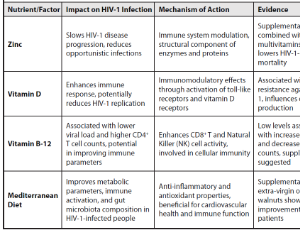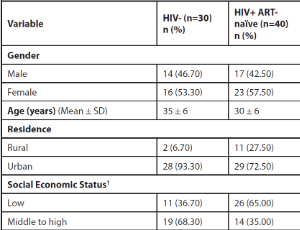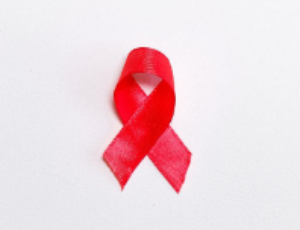Loading
Journal of AIDS and HIV Treatment
ISSN: 2688-7436


Olga S. Latinovic
Adjunct faculty NIH
University of Maryland, School of Medicine, USA
Featured Article
Potential Advantages of a Well-balanced Nutrition Regimen for People Living with Human Immunodeficiency Virus Type -1

Featured Article
Detection of Undiagnosed Elevated Cardiovascular Risk Biomarkers among HIV-Positive Patients on Antiretroviral Therapy (ART) in Kigali-City, Rwanda

Featured Article
Pregnancy Outcomes in Pregnant Women with HIV on Tenofovir Disoproxil Fumarate (TDF) Compared to Tenofovir Alafenamide (TAF)

About this Journal
Journal of AIDS and HIV Treatment is an international, open access journal dedicated to publish peer-reviewed articles related to clinical research, experimental studies, molecular aspects, translational studies, treatment and prevention of HIV and AIDS. Prospective authors may submit original research, reviews, case reports, commentaries, short communications, letters to the editor, clinical and epidemiological studies.
Articles
Perceptions and Knowledge of HIV/AIDS Among Black Women: An Exploratory Study
Black women in the United States face disproportionate rates of HIV/AIDS, with higher new infection rates and poorer health outcomes compared to other racial and gender groups. This study seeks to explore the perceptions and knowledge surrounding HIV/AIDS among Black women, to contribute to social work and public health knowledge. By identifying gaps in awareness and understanding of the distinct challenges Black women face regarding HIV/AIDS, this study provides valuable insight to inform the development of targeted interventions and policies to mitigate the impact of HIV/AIDS.
Disclosing Sexual Partner's HIV/AIDS Status before Sexual Activity: A Cross-sectional Study on Factors Affecting Confidence
Background: Human immunodeficiency virus (HIV) can be transmitted through the exchange of body fluids with persons who are HIV positive. For the sake of prevention and care, disclosing the partner’s HIV status is crucial. Most sexual partners face difficulties in inquiring about the HIV status of their sexual partners. Partner’s negative reaction, stigma, and fear of judgment deter the sexual partners discussions on HIV status. The study assessed factors affecting confidence in enquiring about the HIV/AIDS status before sexual activity.
Determination of Anthropometric and Immune Inflammatory Responses in Patients on Dolutegravir Based Antiretroviral Therapy at University of Nigeria Teaching Hospital Ituku-Ozalla
Dolutegravir, an integrase strand transfer inhibitor has been found to affect anthropometric indices. A total of 40 subjects comprising 19 male and 21 female were recruited for the study and apparently healthy sex and age matched individuals who tested sero-negative to HIV screening were used as controls. Standard weighing scale and measuring tape were used to determine body mass index (BMI) and Waist-to-Hip Ratio (WHR). Blood samples were collected and analyzed for pro inflammatory cytokines markers, specifically IL6 and TNF-α.
The Performance of a New Multidimensional Frailty Index in Comparison to the Frailty Phenotype to Assess Frailty in People Living with HIV 50 Years of Age and Older in an Urban HIV Clinic
Background: Frailty is increasingly recognized in older people living with HIV (PLWH), but optimal diagnostics are yet to be determined. Frailty indices (FI) represent an accumulation of health deficits shown to correlate better with mortality and adverse effects of aging than the frailty phenotype or chronological age. Methods: This is a retrospective cohort study of frailty assessments in PLWH aged ≥ 50 years in a multidisciplinary urban HIV clinic. Frailty was assessed using Frailty Phenotype (FP) and a new 40-variable clinical composite FI derived from routine clinical and laboratory data (CCFI).
Socio-Demographic Characteristics of Newly Diagnosed People Living with HIV Initiating Antiretroviral Treatment at the Adult Day Hospital of Bobo-Dioulasso Over a Five-year Period
Background: HIV infection is a major public health problem in sub-Saharan Africa, particularly in Burkina Faso. This study aimed to describe the socio-demographic characteristics of newly person living with HIV initiating antiretroviral treatment at the Adult Day Hospital of Bobo-Dioulasso over a five-year period. Materials and methods: A descriptive cross-sectional study was conducted from 1 January 2016 to 31 December 2020 at the Adult Day Hospital of Bobo-Dioulasso. People newly diagnosed with HIV after confirmatory testing and initiating antiretroviral therapy were included in this study.
Creating HOPE: The Development of the HIV, Opioids and Pain Experience (HOPE) Screening Tool
Background: People living with HIV (PLWH) are more likely to experience chronic pain, trauma, and analgesic use than their HIV-negative counterparts. This complex chronic pain profile can have subsequent physical, mental, and psychological sequela. Despite this, a tool to rapidly screen at risk patients and refer to specialized care has not been established. The purpose of this scoping review is to identify current screening tools for chronic pain, trauma, and opioid use to guide design of our comprehensive HOPE (HIV, Opioids and Pain Experience) screening tool.
Epidemiological, Clinical, Therapeutic and Evolutionary Profile of HIV-infected Patients Monitored at the Center of Excellence of the University of Lubumbashi
Introduction: HIV infection is characterized by the progressive destruction of CD4+ T lymphocytes, responsible for an immune deficiency, thus promoting the development of serious opportunistic infections and tumors. Aim: The objective of this study was to describe the epidemiological, clinical, therapeutic, and disease progression of HIV-infected patients registered and monitored at the Center of Excellence at the University of Lubumbashi. Methods: Retrospective descriptive study, carried out from 2006 to 2024 using patient records registered at the Center of Excellence.
Viral Load Suppression and Associated Factors among People Living with HIV on Antiretroviral Therapy in a Tertiary Health Institution in Owo, Southwest, Nigeria
Background: Suppression of Human Immuno-deficiency Virus (HIV) viral load (VL) is essential for preventing disease progression and improved quality of life in persons living with HIV (PLHIV). In 2023, Nigeria had an HIV prevalence rate of 2.1% while Ondo state was 1.1%. No prior characterization of the status of viral load suppression of PLHIV in the Owo, Ondo state has been undertaken. This study aimed to determine the predictors of viral load suppression among PLHIV in Owo, Ondo State, Nigeria.
Routine HIV Screening Health Care Assessment in Primary Care in Outpatient Clinics at Southern Puerto Rico
Background: Despite established guidelines recommending routine HIV screening for individuals aged 13 to 64 at least once in their lifetime, testing remains underutilized in many primary care settings. Puerto Rico faces a disproportionately high HIV burden, particularly in the southern region, yet limited data exist on screening adherence and patient awareness. This study aimed to evaluate the socio-demographic characteristics and sexual behaviors associated with routine HIV testing among adults in primary care clinics in southern Puerto Rico.
The Outcome of Operation Triple Zero Clubs on Viral Load Outcomes among Adolescents Living with HIV: An Interventional Study of ICHSSA-2 Project in Lagos State
In Nigeria, the total number of AIDS-related deaths among children and adolescents was 16,200 in 2020. The Integrated Child Health and Social Services Award 2 (ICHSSA-2) project supports Operation Triple Zero (OTZ) clubs in 13 health facilities in Lagos State with support from PEPFAR through the United States Agency for International Development (USAID). The initiative aimed at ensuring zero missed appointments, zero missed drugs, and zero viral load among adolescents living with HIV (ALHIV).
Beyond Viral Suppression: Navigating Structural Barriers, Aging and Frailty, Drug Resistance, Therapeutic Innovations, and Reproductive Health Challenges in the Global HIV/AIDS Epidemic
HIV programs worldwide have achieved remarkable gains toward viral suppression, transforming HIV from a fatal illness into a chronic condition for many. Despite these successes, a substantial proportion of people living with HIV (PLWH) continue to face poor health outcomes that extend well beyond viral control. Persistent social determinants of health and structural barriers, including poverty, stigma, discrimination, and disrupted health systems, limit access to prevention, treatment, and retention in care.
Pregnancy Outcomes in Pregnant Women with HIV on Tenofovir Disoproxil Fumarate (TDF) Compared to Tenofovir Alafenamide (TAF)
HIV infection in pregnancy continues to be of significant clinical and public health importance [1,2]. The current statistics published by the World Health Organization (WHO) demonstrate that 38 million people are living with HIV in 2019, and 1.1 million (85%) pregnant women living with HIV received antiretroviral therapy (ARVs) during pregnancy and postpartum.
Toward Personalized Medicine for HIV/AIDS
In 2019, approximately 38 million people were infected with HIV worldwide [1]. Although there is still no cure that successfully eradicates the disease, combination antiretroviral therapy (cART) has improved to a point where undetectable viral loads have become achievable and HIV carriers often live almost normal lives with very substantially increased average life expectancies compared to historical data.
Fostemsavir in Heavily Treatment-Experienced Individuals Living with HIV-1: Insights from the Phase 3 BRIGHTE Study
Fostemsavir (Rukobia™, ViiV Healthcare, Research Triangle Park, NC), a prodrug of the first-in-class attachment inhibitor temsavir, was developed to provide a much-needed new therapeutic option for heavily treatment-experienced (HTE) people living with HIV-1 (PLWH) who are unable to form a suppressive regimen from remaining viable antiretroviral (ARV) agents because of multidrug resistance, contraindications, prior intolerance, or other safety considerations.
Pre-Exposure Prophylaxis (PrEP) Safety and Tolerability in Individuals ≥ 45 Years Old
Pre-exposure prophylaxis (PrEP) is a combination of antiretroviral medications, most commonly prescribed as two co-formulated antiretrovirals, taken as a single tablet daily to significantly reduce the risk of human immunodeficiency virus (HIV) infection in individuals at high risk.
Early Insights into COVID-19 in Persons Living with HIV and Cardiovascular Manifestations
At the end of 2019, a novel coronavirus was identified as the cause of a cluster of pneumonia cases in Wuhan, a city in the Hubei Province of China.
Assessment of Attitudes toward HIV and AIDS among Undergraduate Students at a Historically Black University
HIV is no longer only a public health challenge, but also a global threat with a devastating negative impact that has claimed over 35 million lives globally. In 2017, about 36.9 million people live with HIV, and 1.8 million people becoming newly infected with the disease globally [1].
Dihydropteroate Synthase (DHPS) Gene Mutations in Human Pneumocystosis
Extraordinary journey began on June 18, 1981, the Centre for Disease Control and Prevention (CDC) in United States reported a cluster of Pneumocystis carinii pneumonia (now known as Pneumocystis jirovecii (P. jirovecii) pneumonia or Pneumocystis pneumonia in five gay men in Los Angeles.
Pre-exposure Prophylaxis (PrEP) for HIV Infection and New Sexually Transmitted Infections: A Win-Win Opportunity?
Pre-exposure prophylaxis (PrEP) significantly reduces the risk of HIV acquisition in patients exposed to a high risk of infection such as men who have sex with men (MSM), heterosexual couples, and people who inject drugs.
Development of an Ultrasensitive HIV-1 DNA Detection Assay Based on an Automated πCode End-Point PCR System
Currently, around 60-75% of the HIV positive patients in developed countries on anti-retroviral therapy (ART) have undetectable plasma viral load using current diagnostic PCR assays.
HIV-1 Treatment Failure among Population Taking Antiretroviral Therapy in Ethiopia
For more than 35 years, the world has grappled with an AIDS epidemic that has claimed an estimated 35.0 million [28.9 million-41.5 million] lives and at its peak threatened global stability and security.
Assessment of Attitudes toward HIV and AIDS among Undergraduate Students at a Historically Black University
HIV is no longer only a public health challenge, but also a global threat with a devastating negative impact that has claimed over 35 million lives globally. In 2017, about 36.9 million people live with HIV, and 1.8 million people becoming newly infected with the disease globally [1].
Potential Advantages of a Well-balanced Nutrition Regimen for People Living with Human Immunodeficiency Virus Type -1
This review underscores the important role of nutrition in enhancing the management of Human Immunodeficiency Virus type 1 (HIV-1). Highlighting the efficacy of dietary interventions, including, the importance of omega-3 fatty acids, vitamins D and B-12, and the Mediterranean diet, we delineate how these beneficial nutritional strategies can improve the effectiveness of combined antiretroviral therapy (cART), mitigate its side effects, and ameliorate metabolic disorders in people living with HIV-1 (PLWH).
Patient Satisfaction and Perceptions Regarding Anti-Retroviral Therapy (ART) Services in Rural Southwestern Uganda
Patient satisfaction and perception of the healthcare services received contribute to compliance with treatment guidelines, retention in care, and adherence to recommendations. This is especially so in the treatment of chronic medical conditions such as HIV/AIDS. The success of antiretroviral therapy (ART) plays a fundamental role in determining the quality of life of people living with HIV/AIDS (PLWHAs).
Known and New Routes to Neutralize HIV-1 with Camelid Single Chain Antibody Fragments
In spite of all efforts to reduce transmission of HIV-1, 1.7 million persons were infected in 2019 worldwide. Whereas in the developed countries the COVID-19 pandemic is reasonably controlled within 2 years because of the fast and successful development of vaccines, nearly 40 years after the first reported cases of AIDS due to HIV-1 and in spite of tremendous efforts to develop vaccines against HIV-1, there are still no vaccines against the virus.
Pregnancy Outcomes in Pregnant Women with HIV on Tenofovir Disoproxil Fumarate (TDF) Compared to Tenofovir Alafenamide (TAF)
HIV infection in pregnancy continues to be of significant clinical and public health importance [1,2]. The current statistics published by the World Health Organization (WHO) demonstrate that 38 million people are living with HIV in 2019, and 1.1 million (85%) pregnant women living with HIV received antiretroviral therapy (ARVs) during pregnancy and postpartum.
Fostemsavir in Heavily Treatment-Experienced Individuals Living with HIV-1: Insights from the Phase 3 BRIGHTE Study
Fostemsavir (Rukobia™, ViiV Healthcare, Research Triangle Park, NC), a prodrug of the first-in-class attachment inhibitor temsavir, was developed to provide a much-needed new therapeutic option for heavily treatment-experienced (HTE) people living with HIV-1 (PLWH) who are unable to form a suppressive regimen from remaining viable antiretroviral (ARV) agents because of multidrug resistance, contraindications, prior intolerance, or other safety considerations.
Pre-Exposure Prophylaxis (PrEP) Safety and Tolerability in Individuals ≥ 45 Years Old
Pre-exposure prophylaxis (PrEP) is a combination of antiretroviral medications, most commonly prescribed as two co-formulated antiretrovirals, taken as a single tablet daily to significantly reduce the risk of human immunodeficiency virus (HIV) infection in individuals at high risk.
About Scientific Archives
Scientific Archives is a global publisher initiated with the mission of ensuring equal opportunity for accessing science to research community all over the world. Spreading research findings with great relevance to all channels without any barrier is our goal. We want to overcome the challenges of Open Access with ensured quality and transparency.
